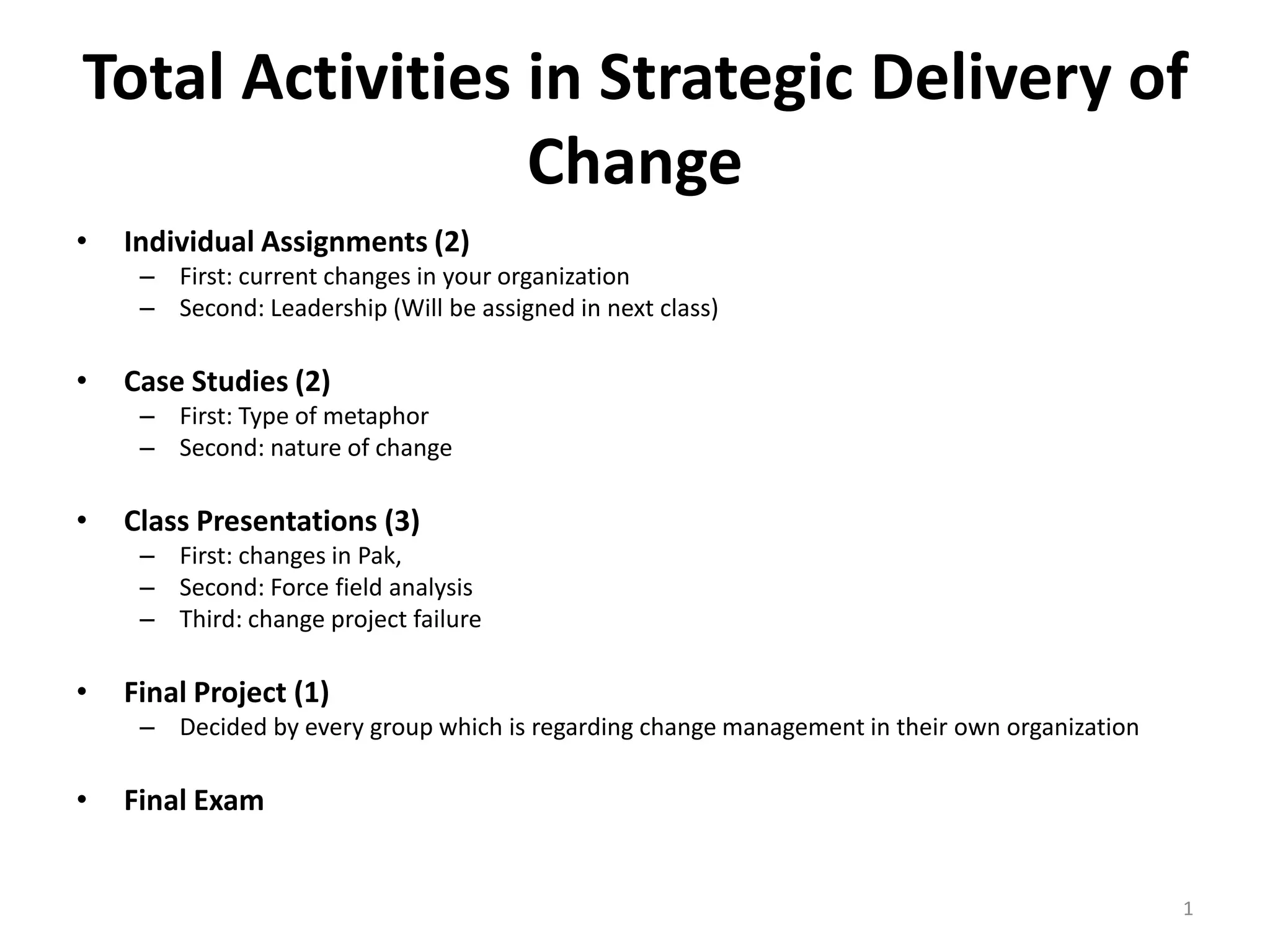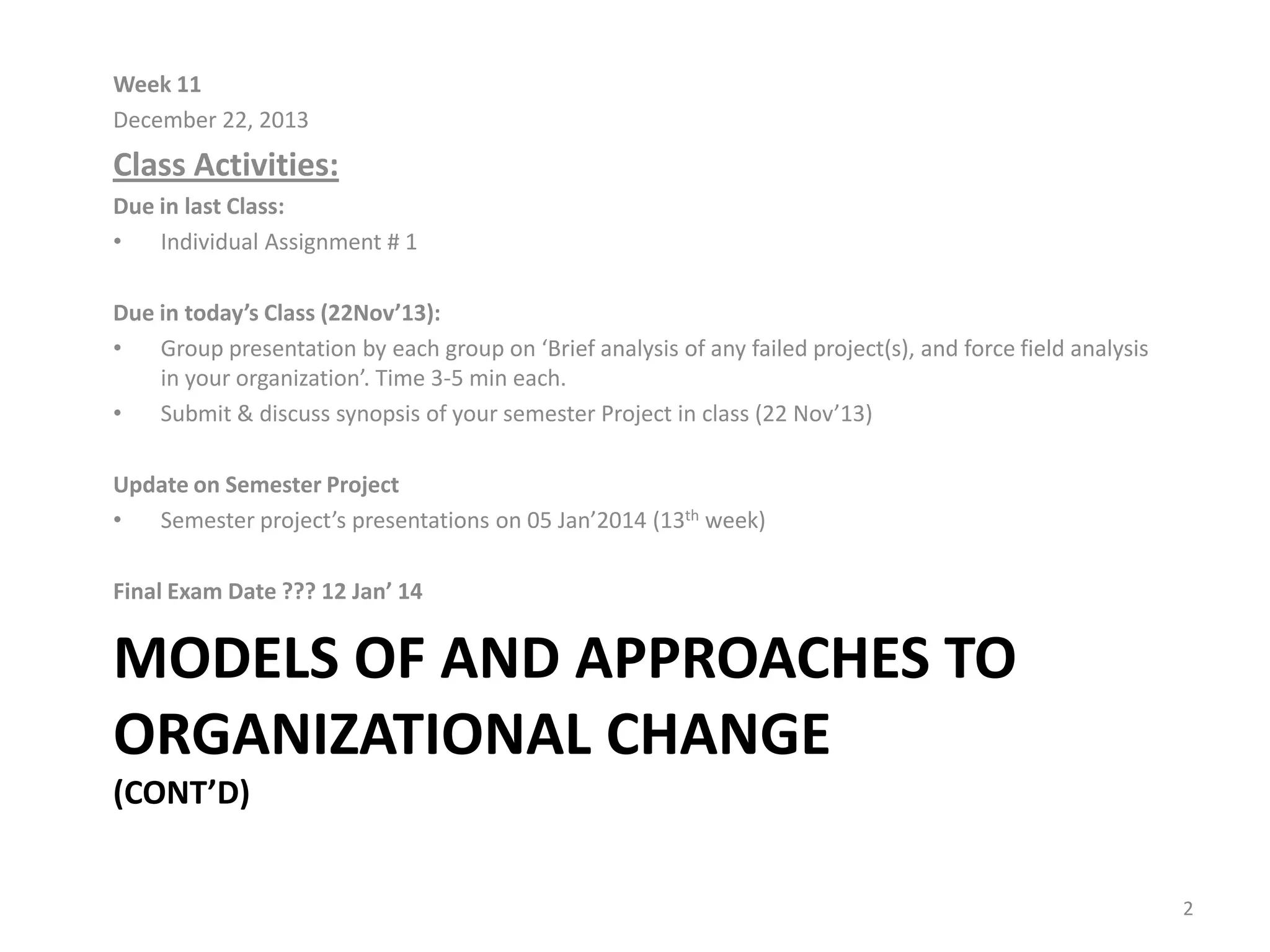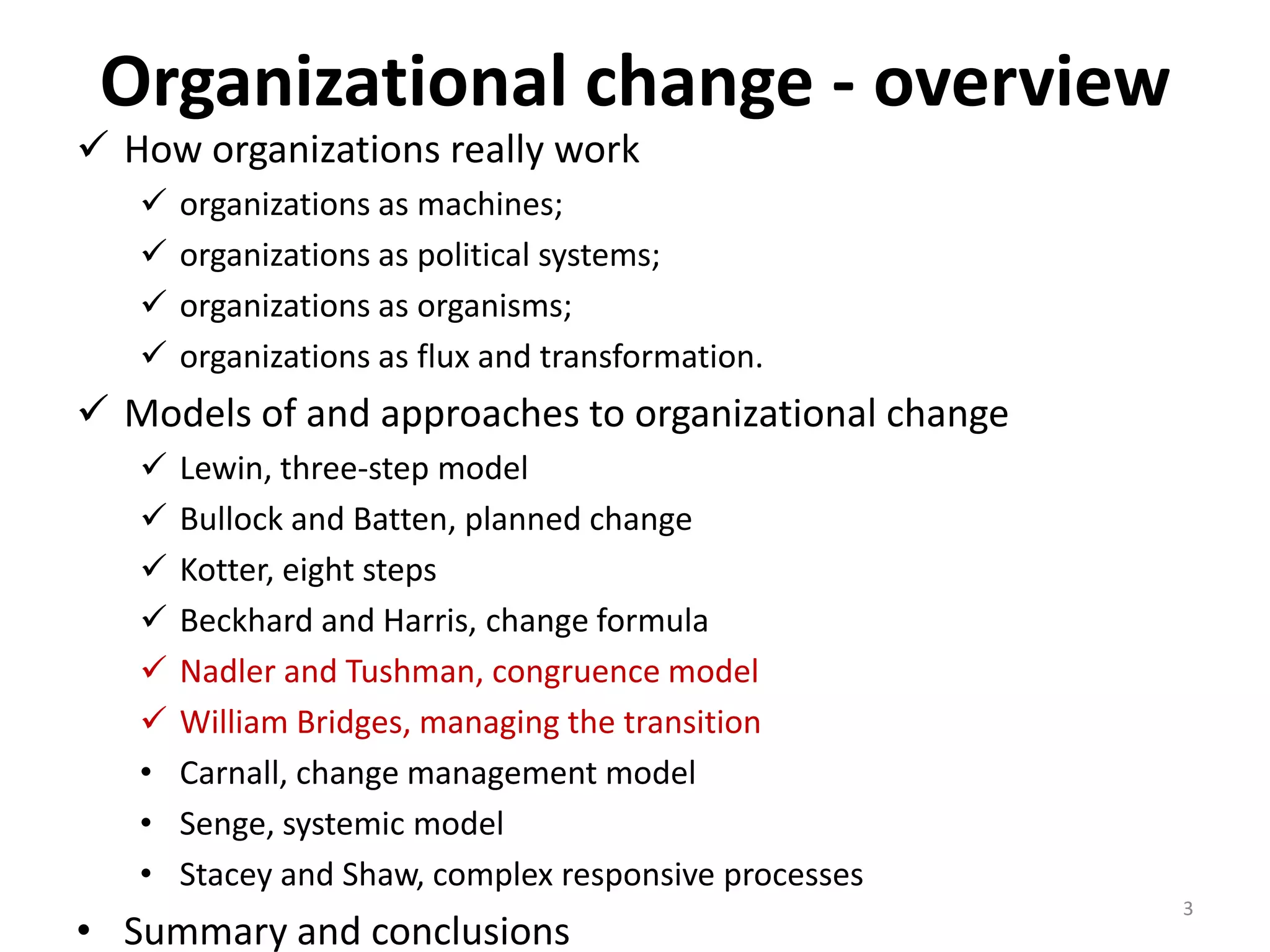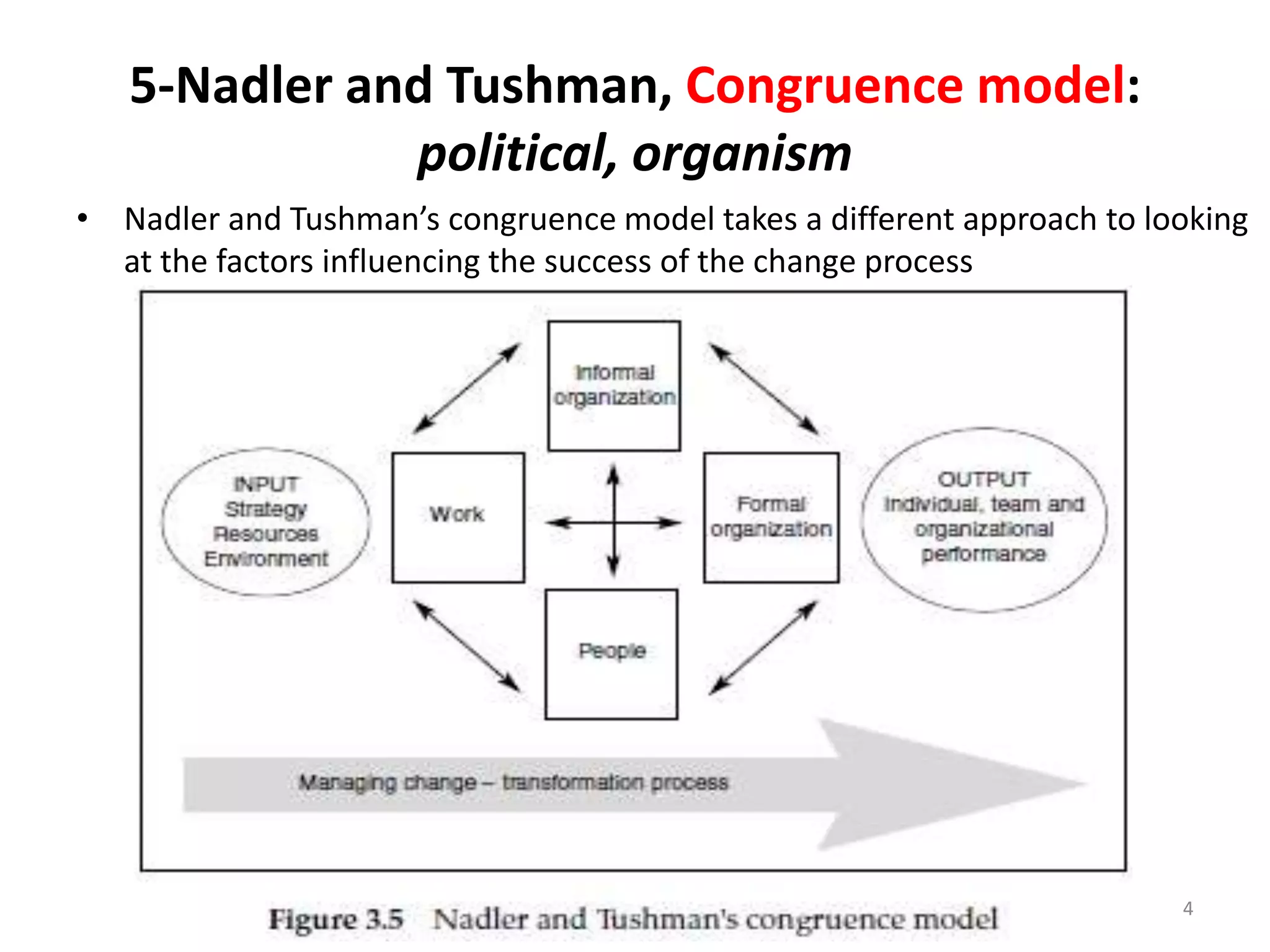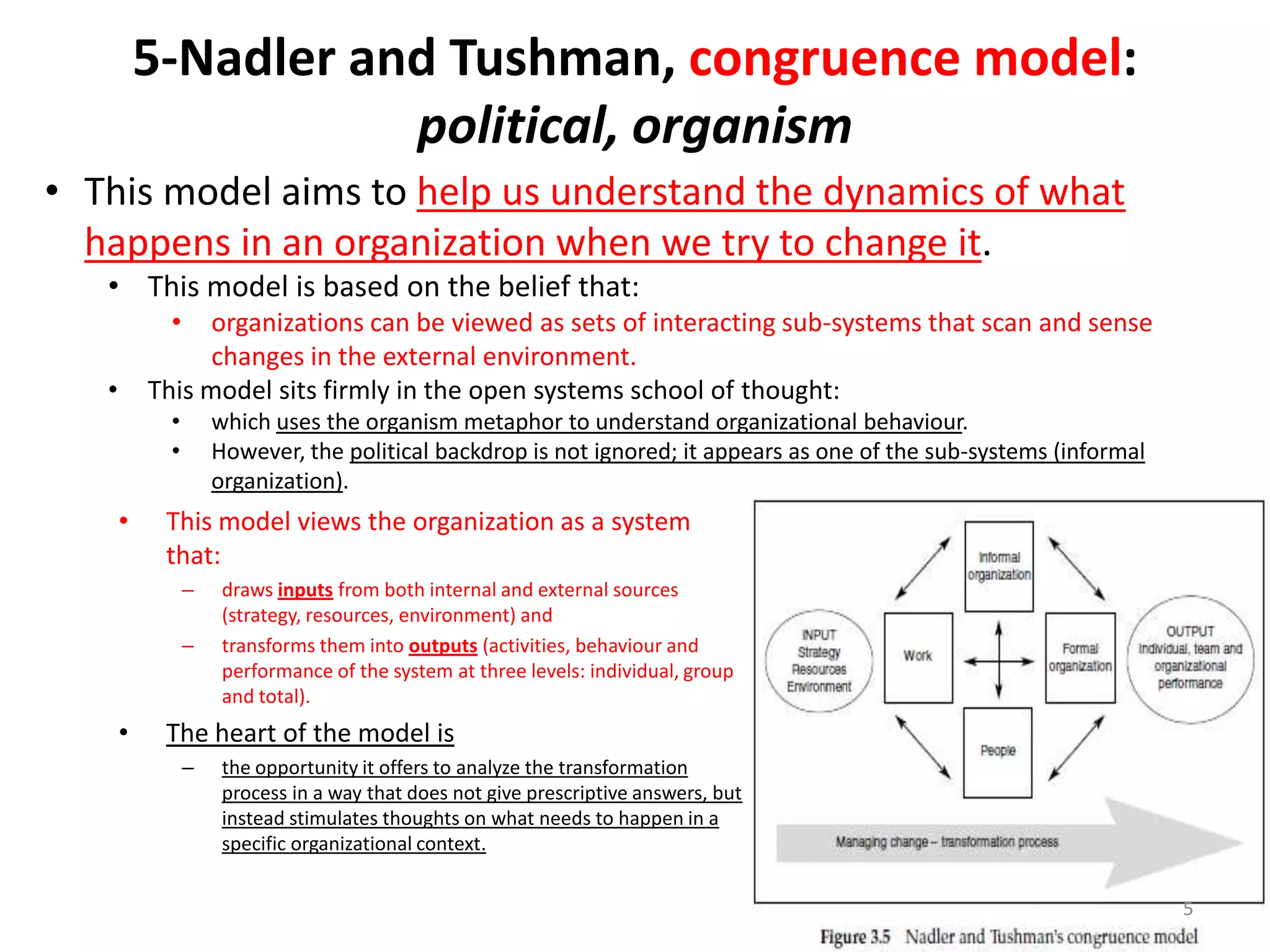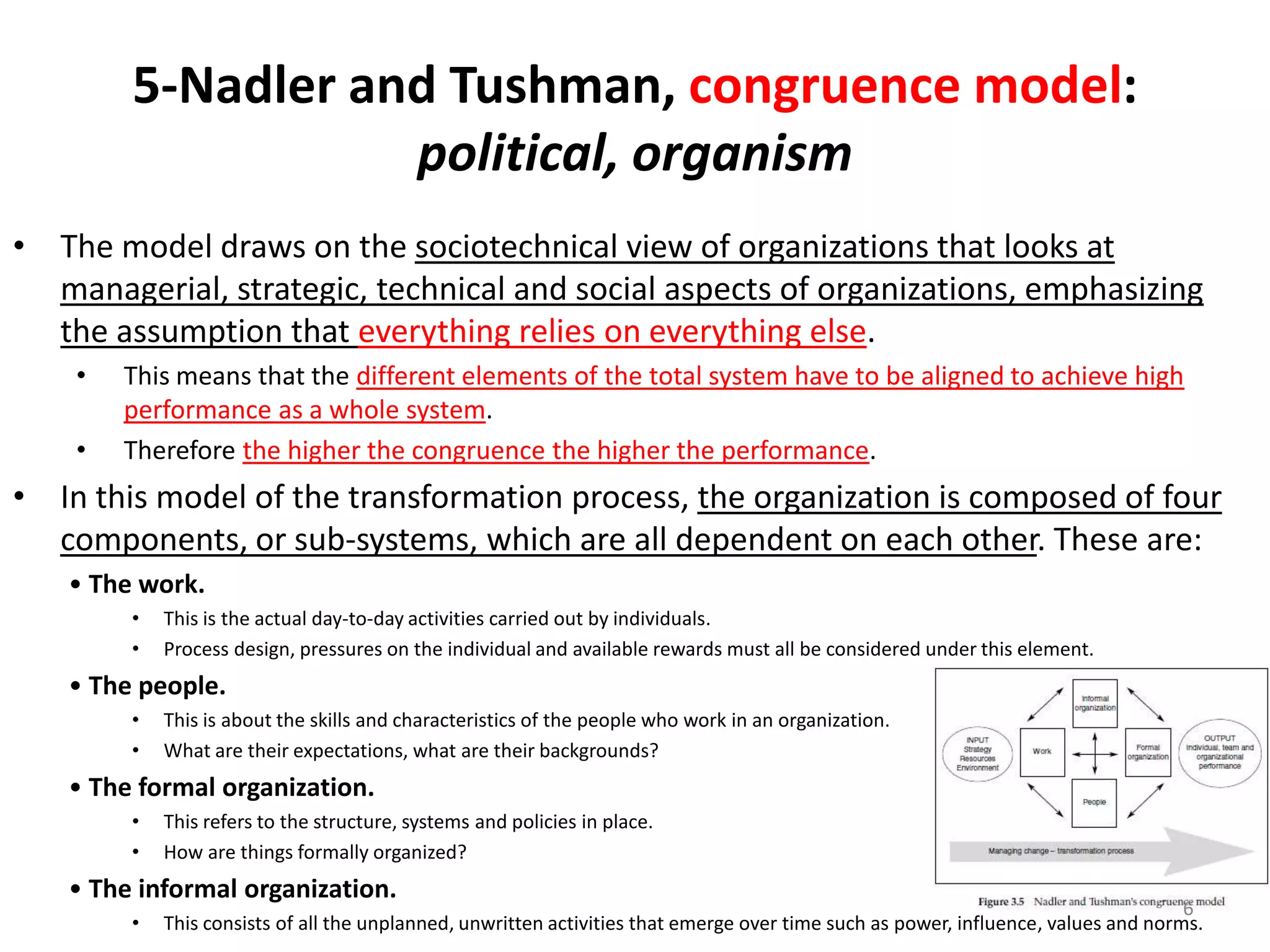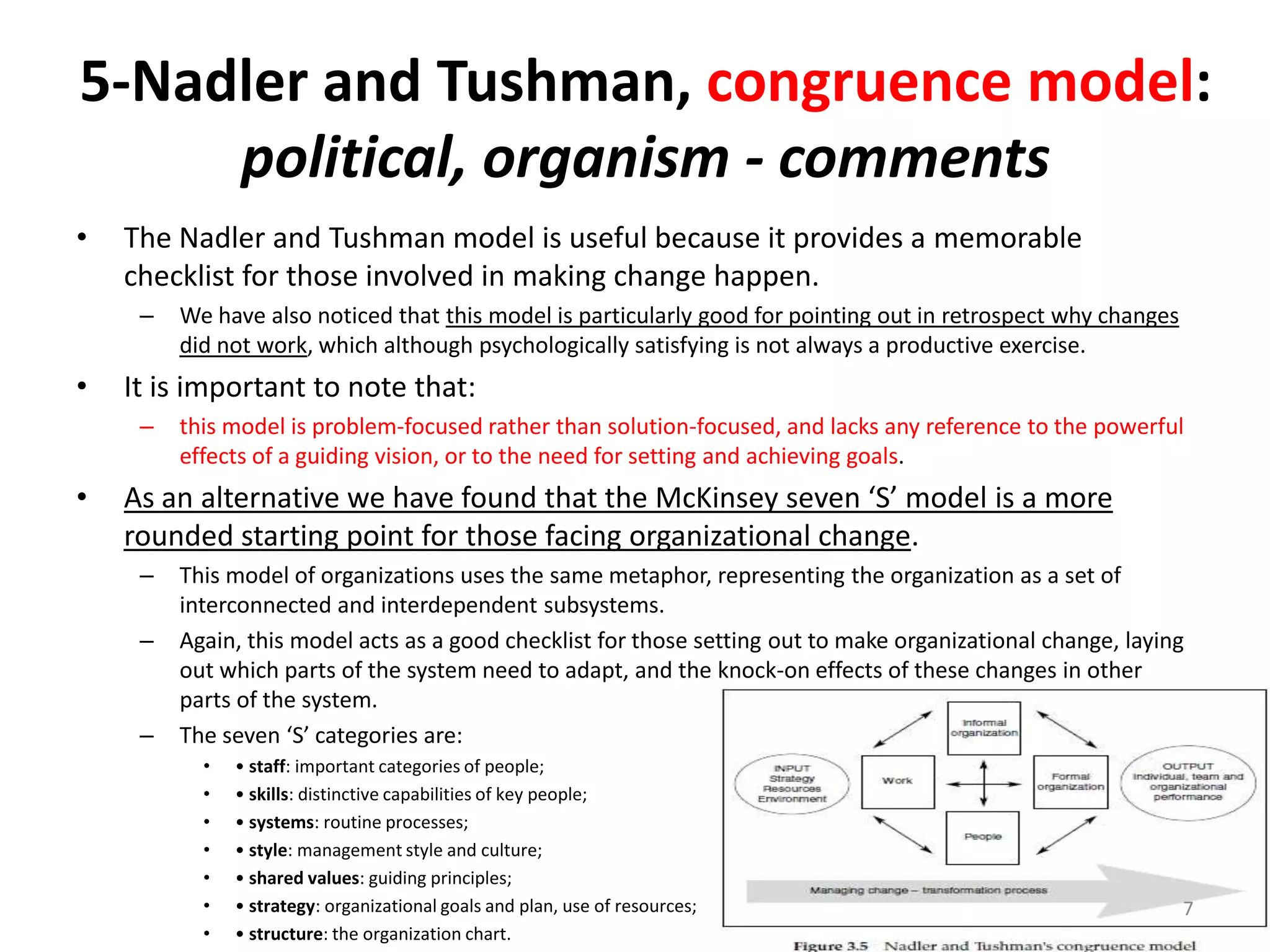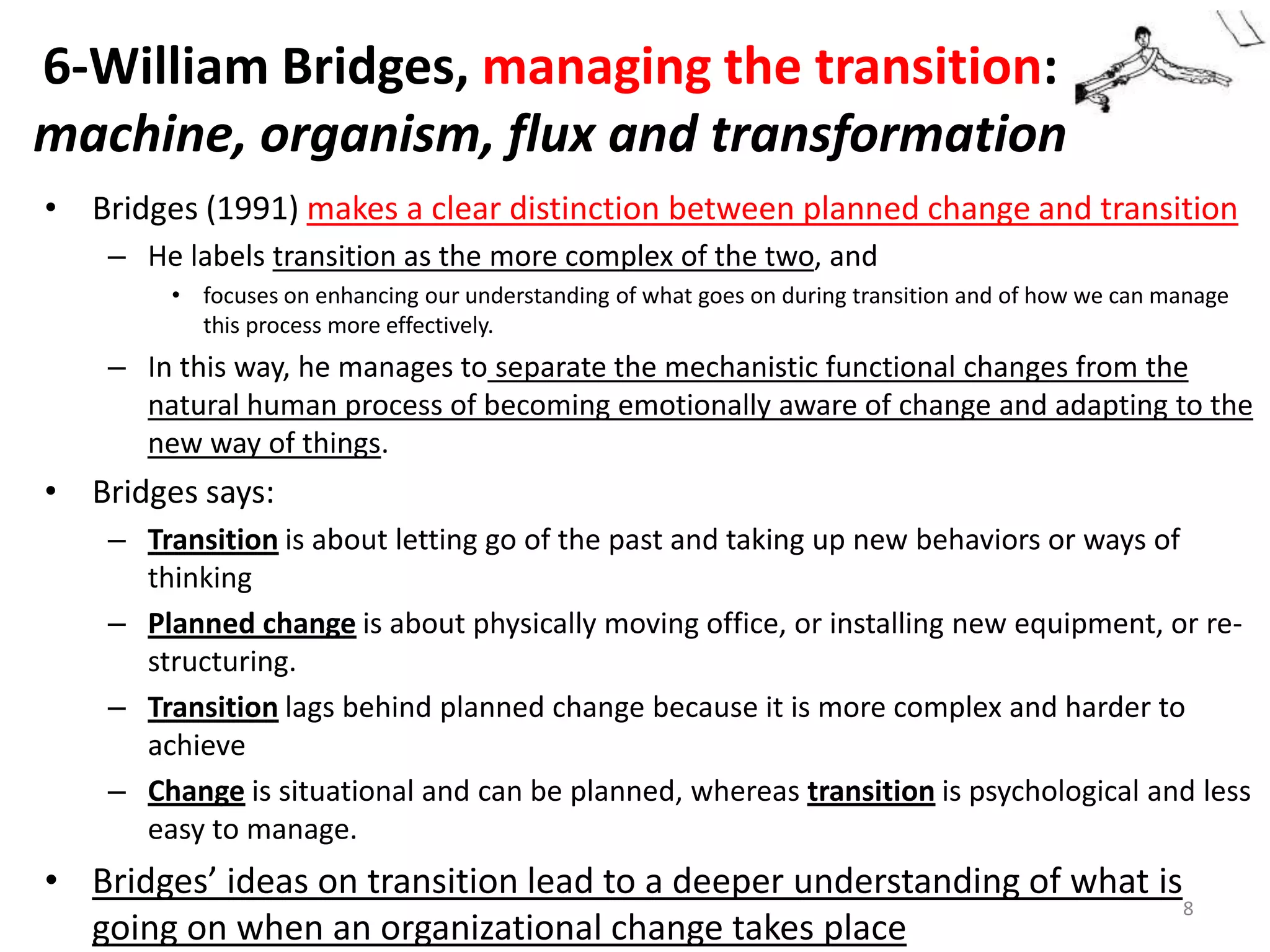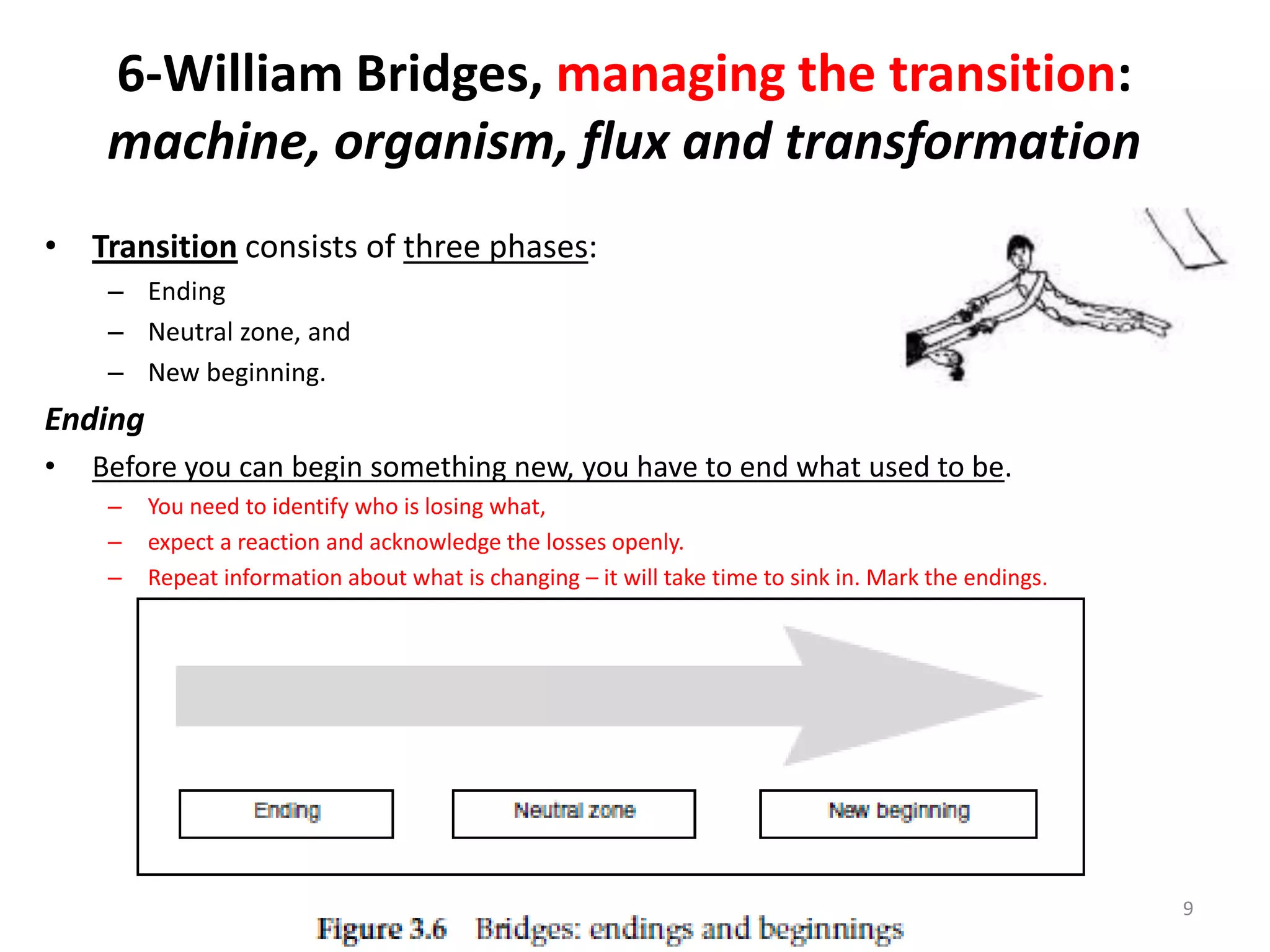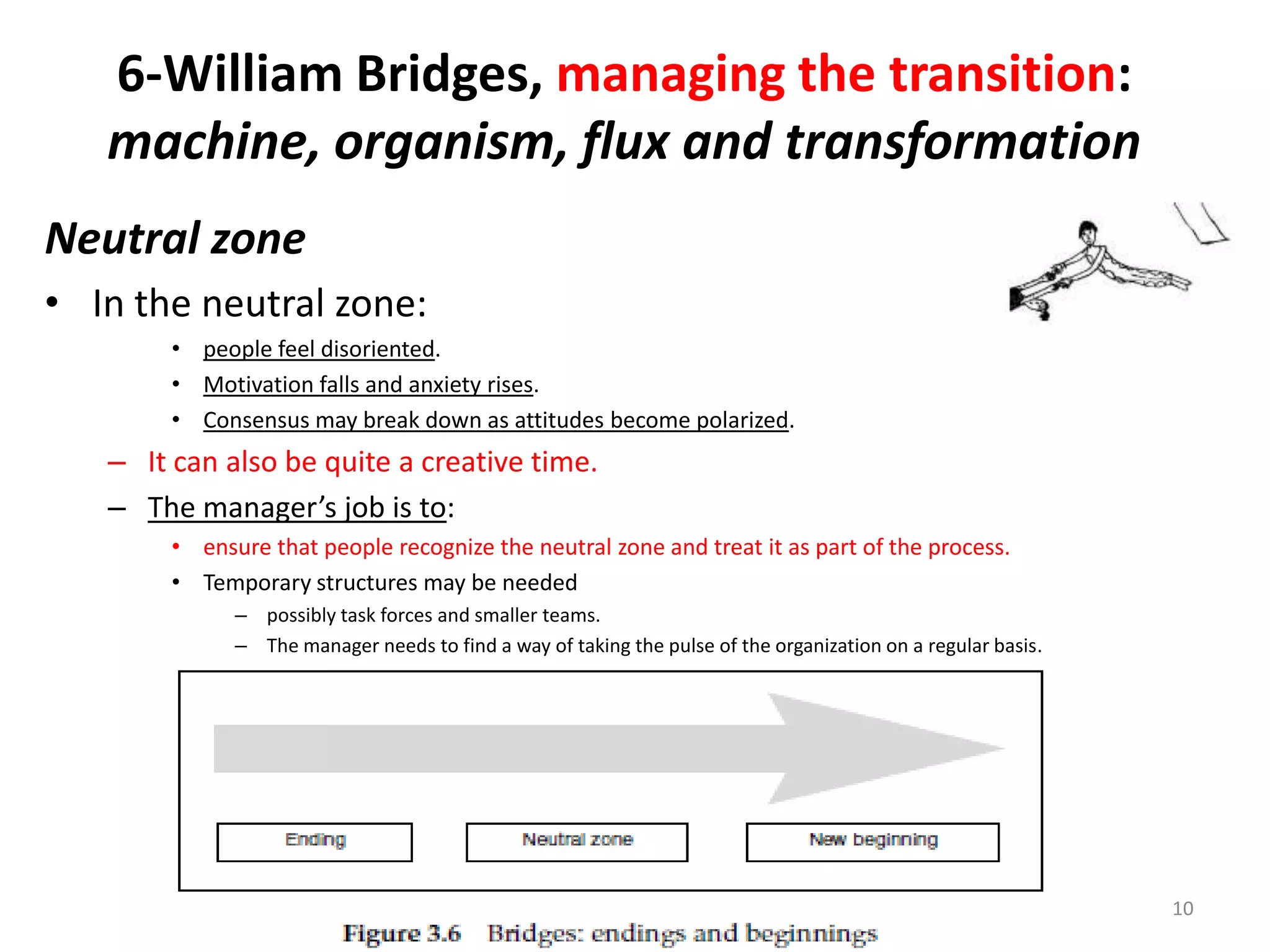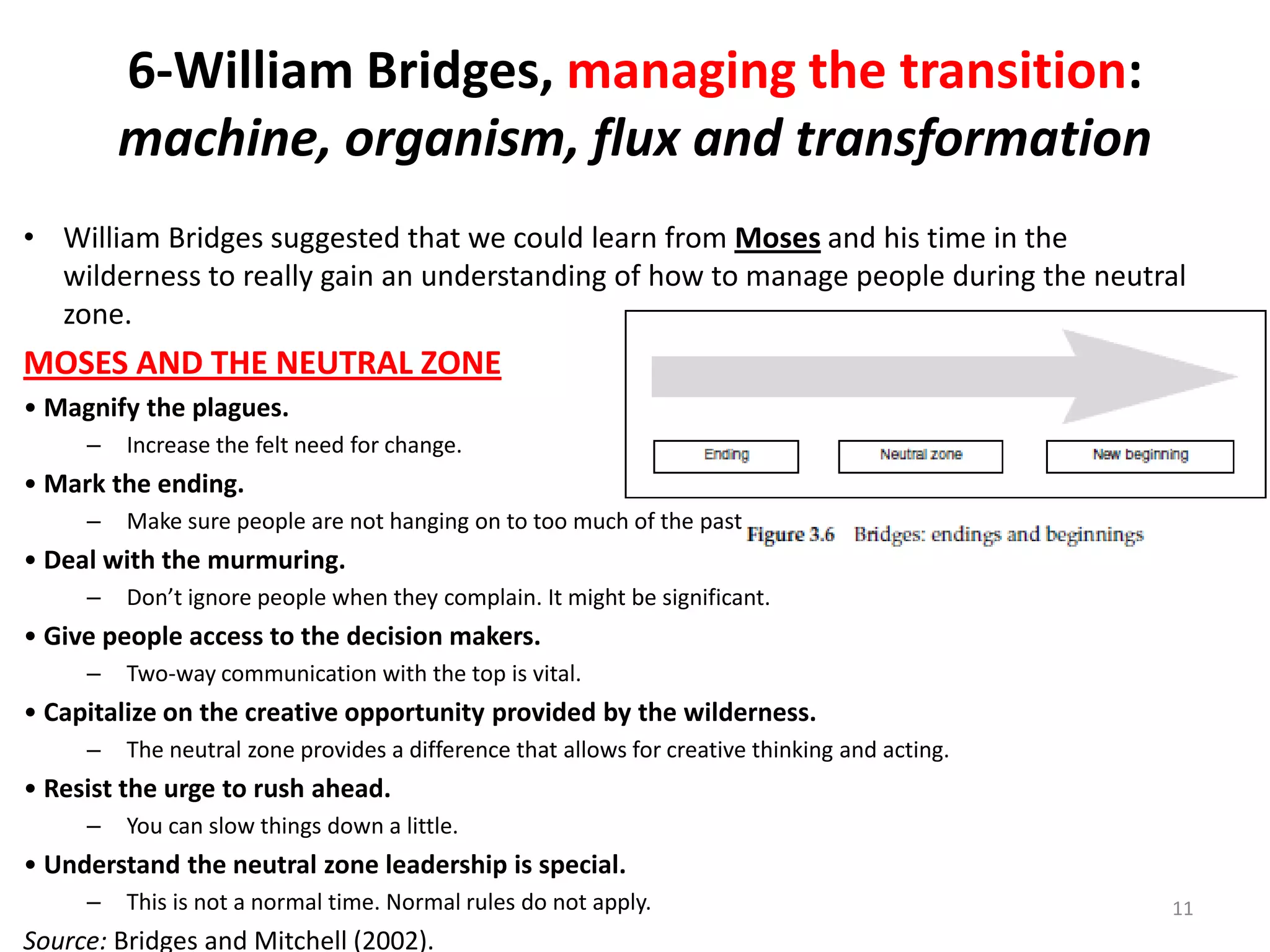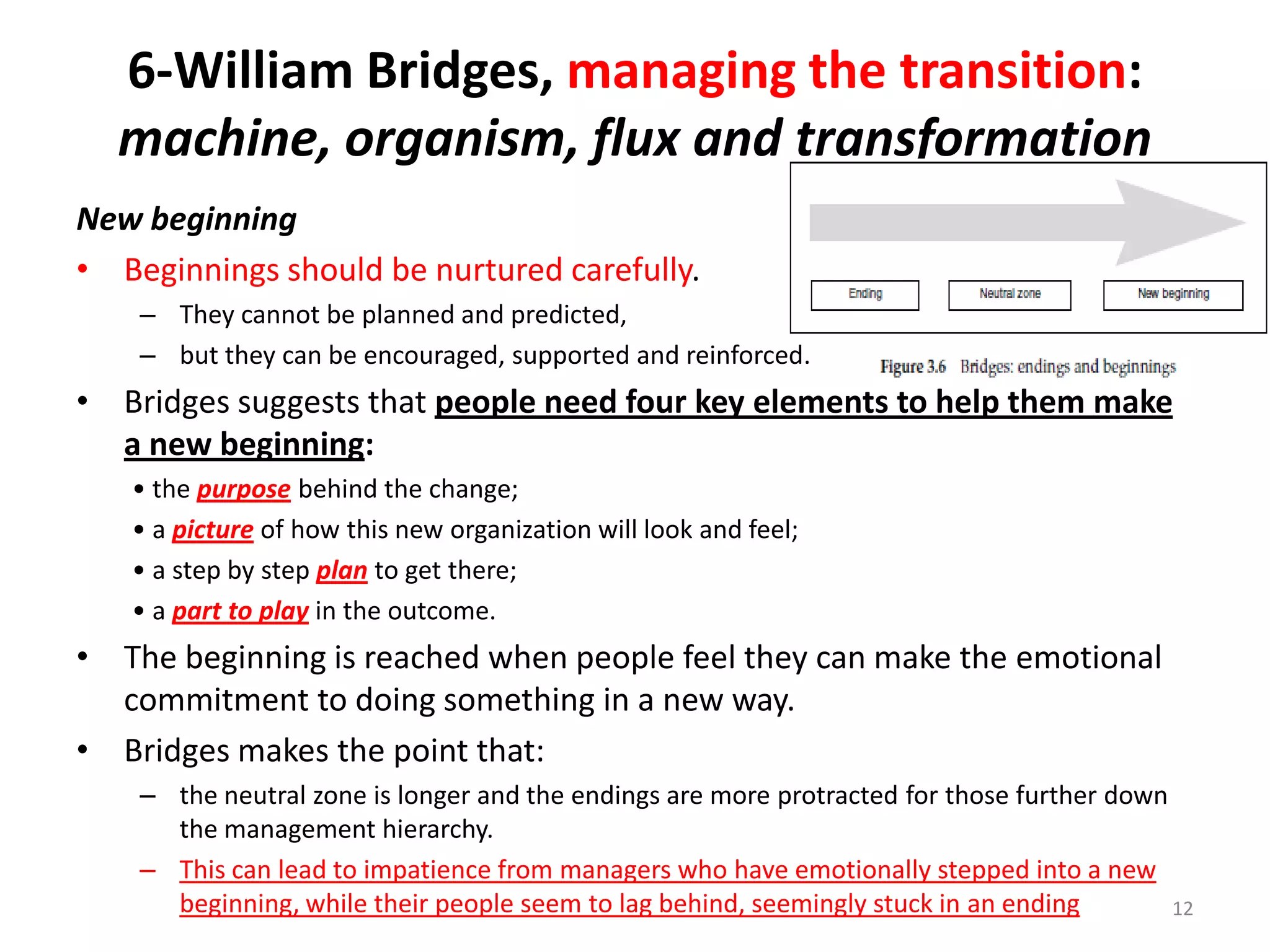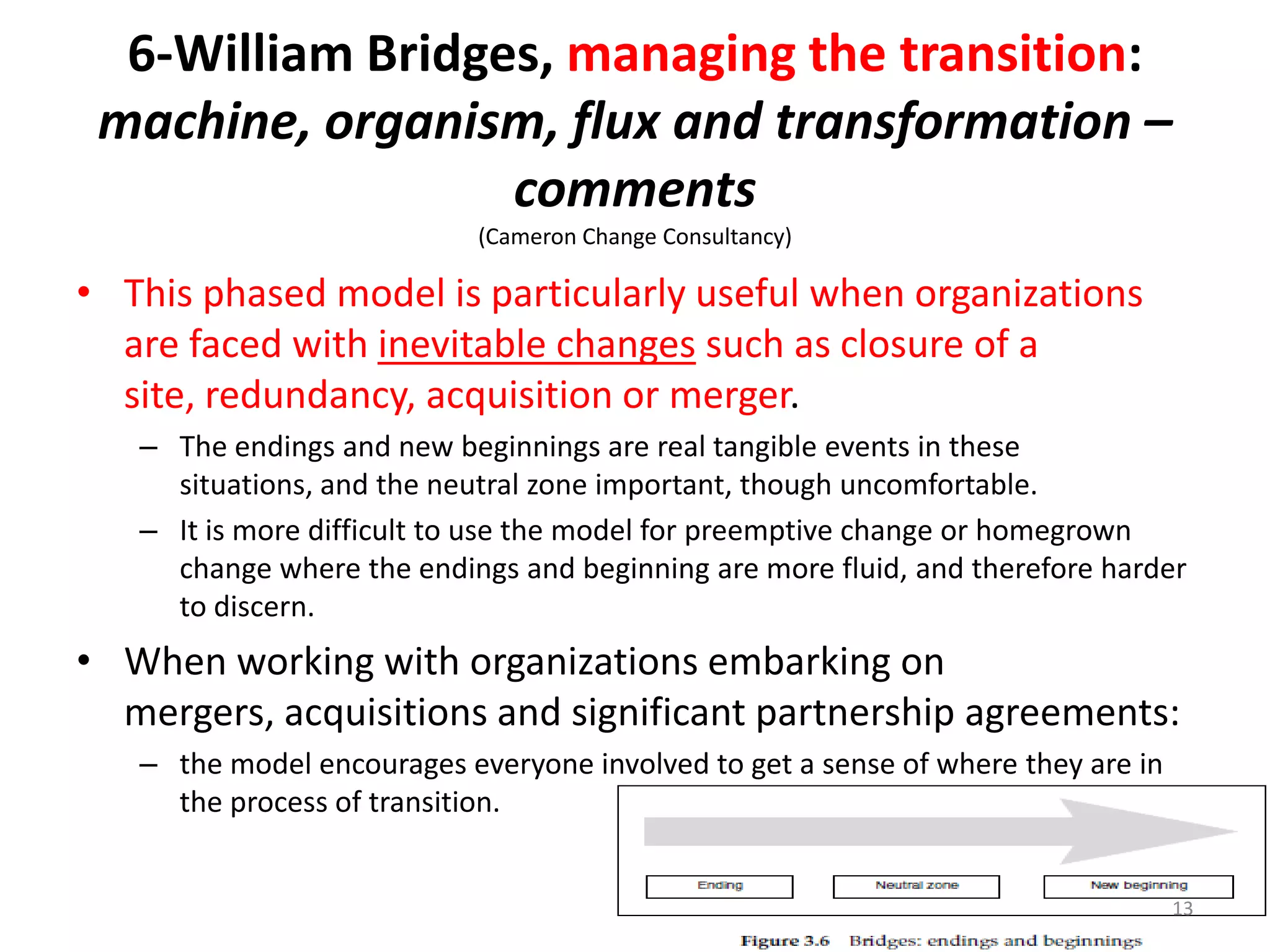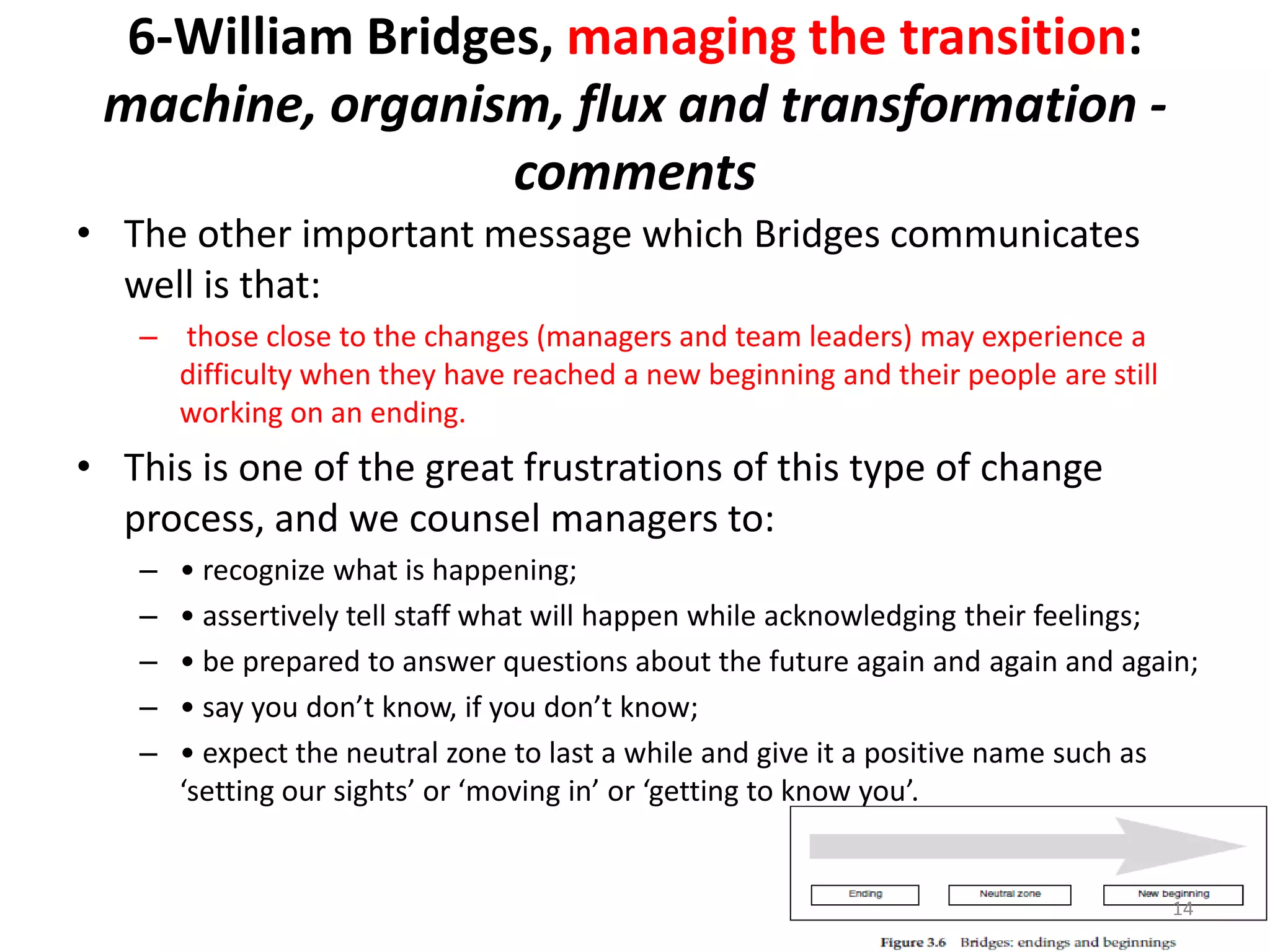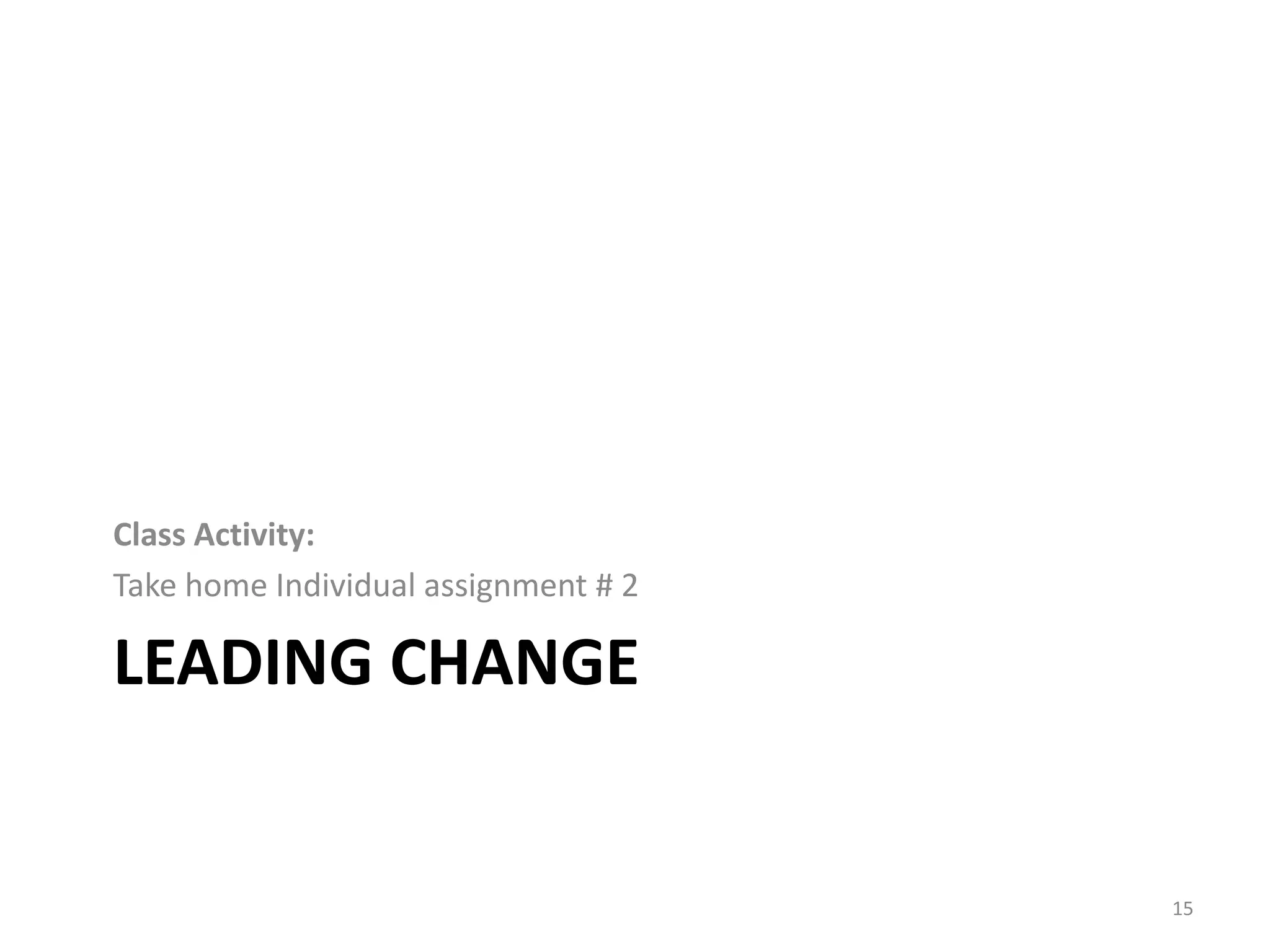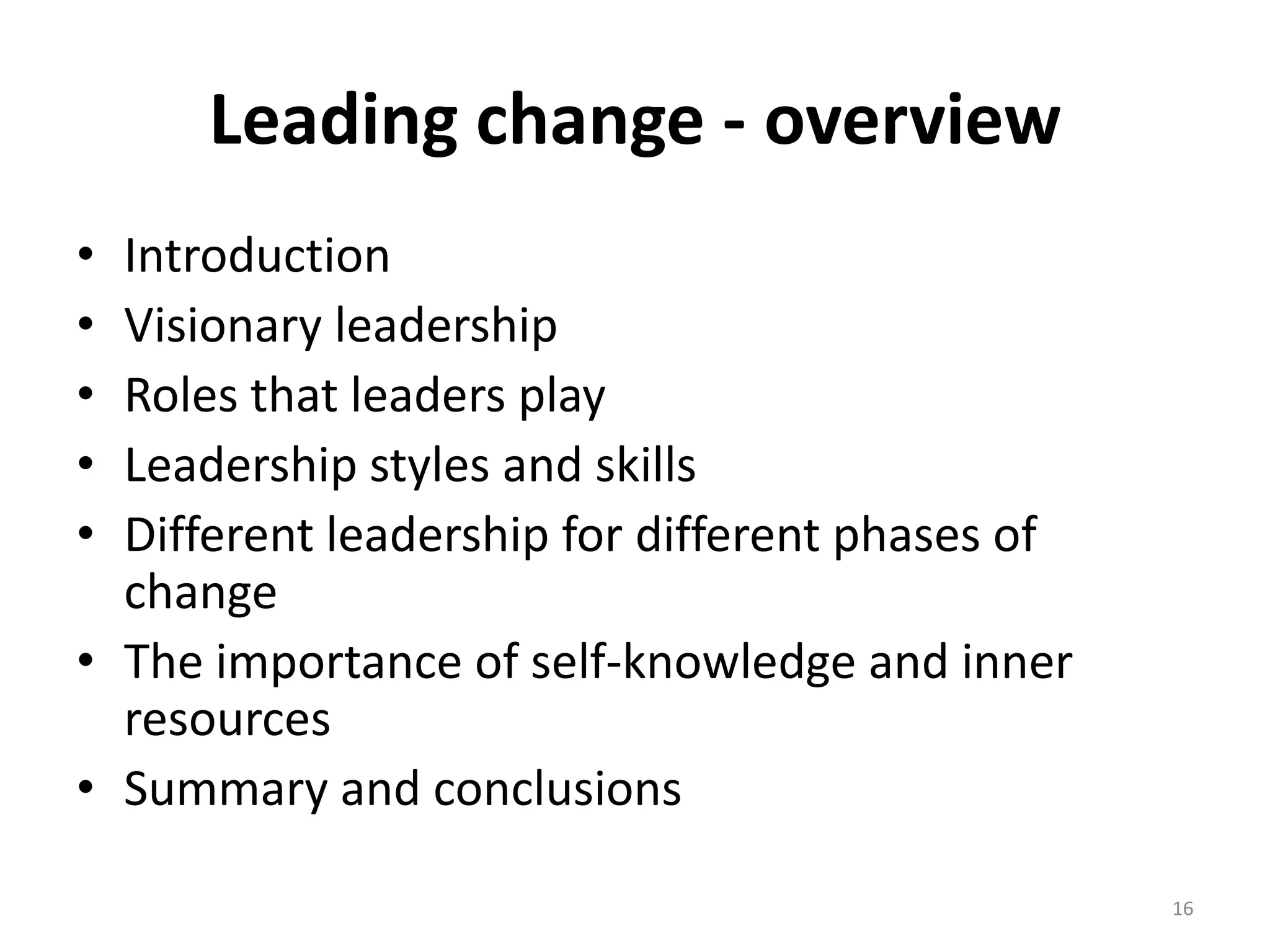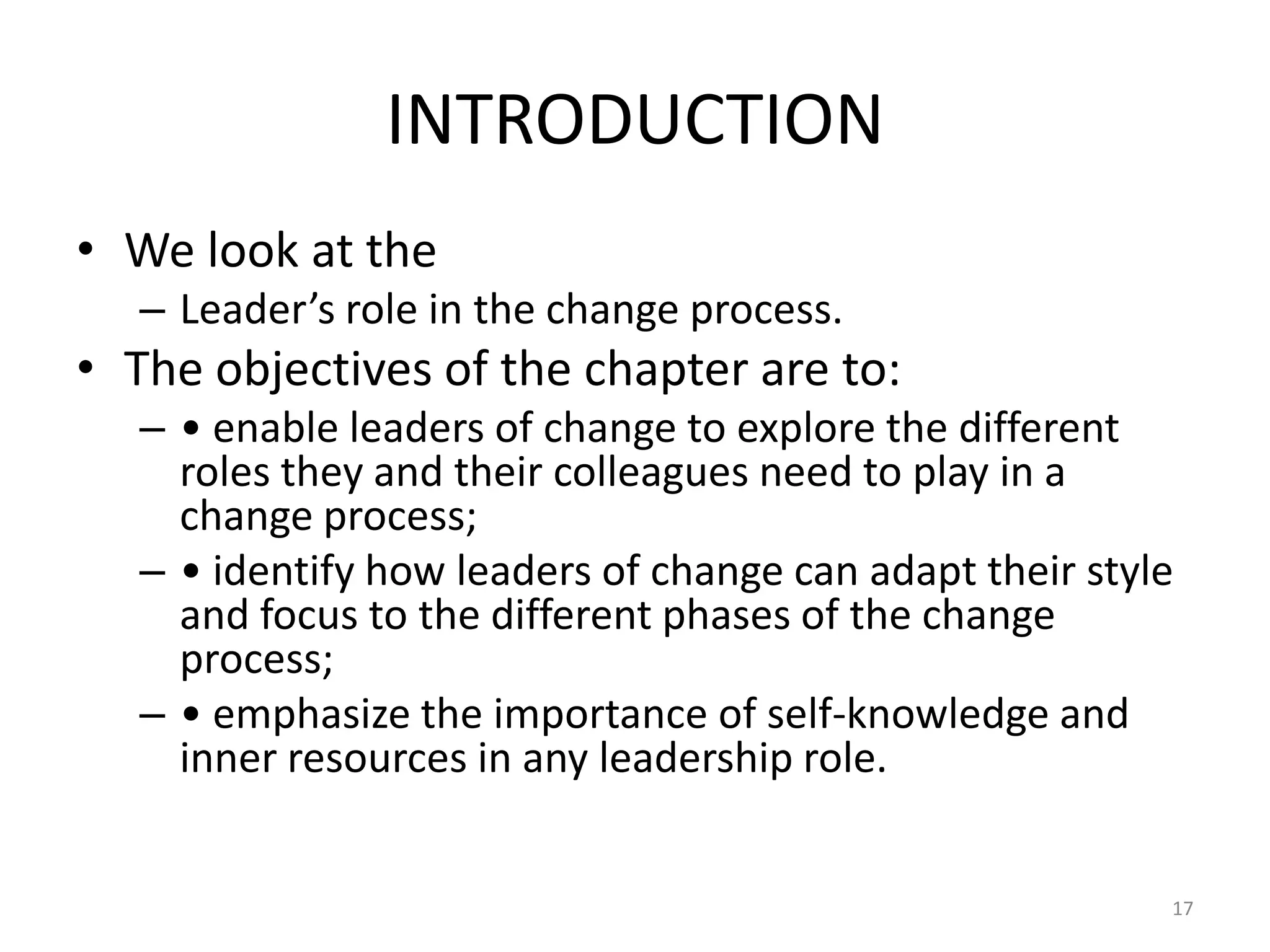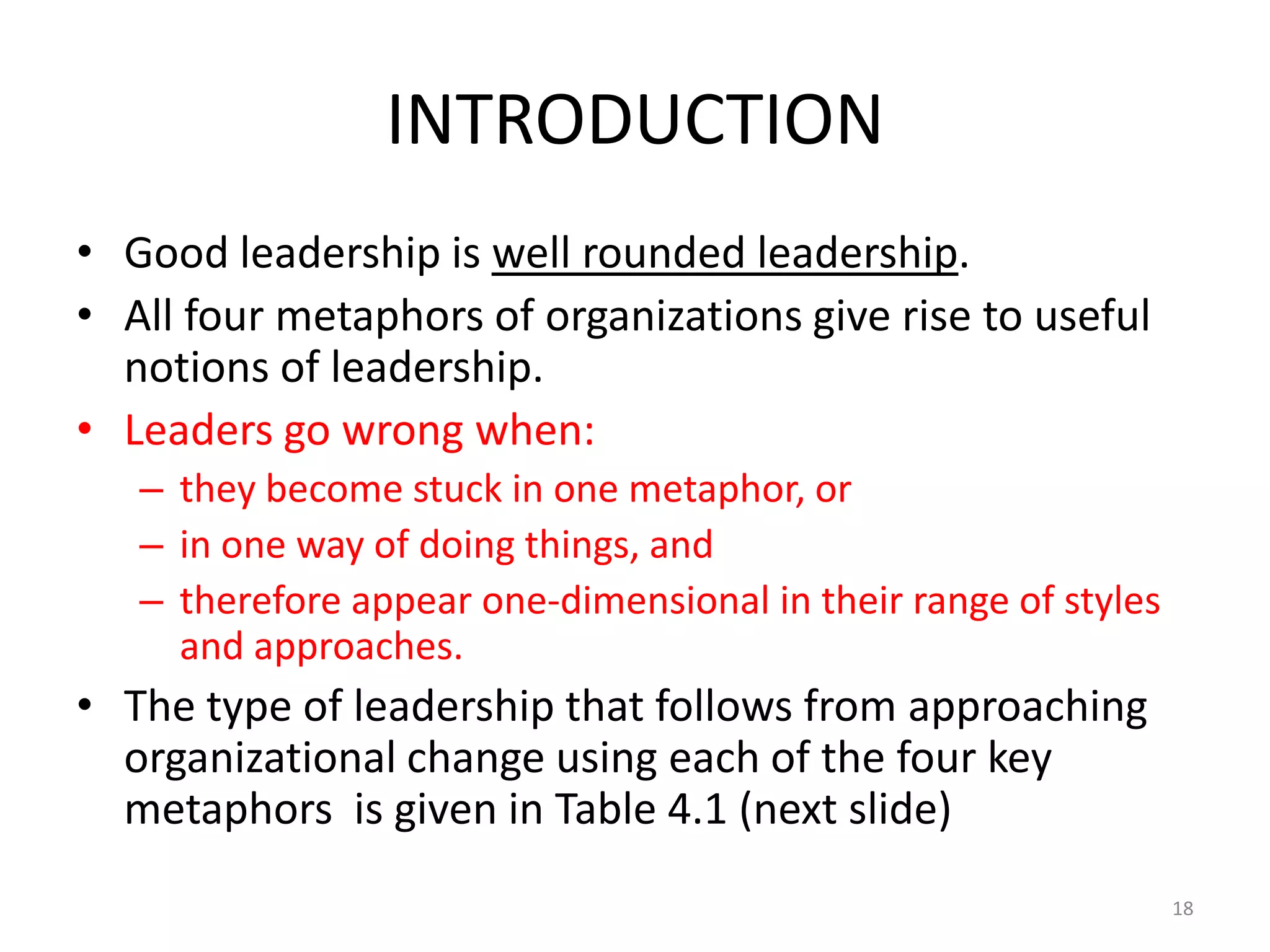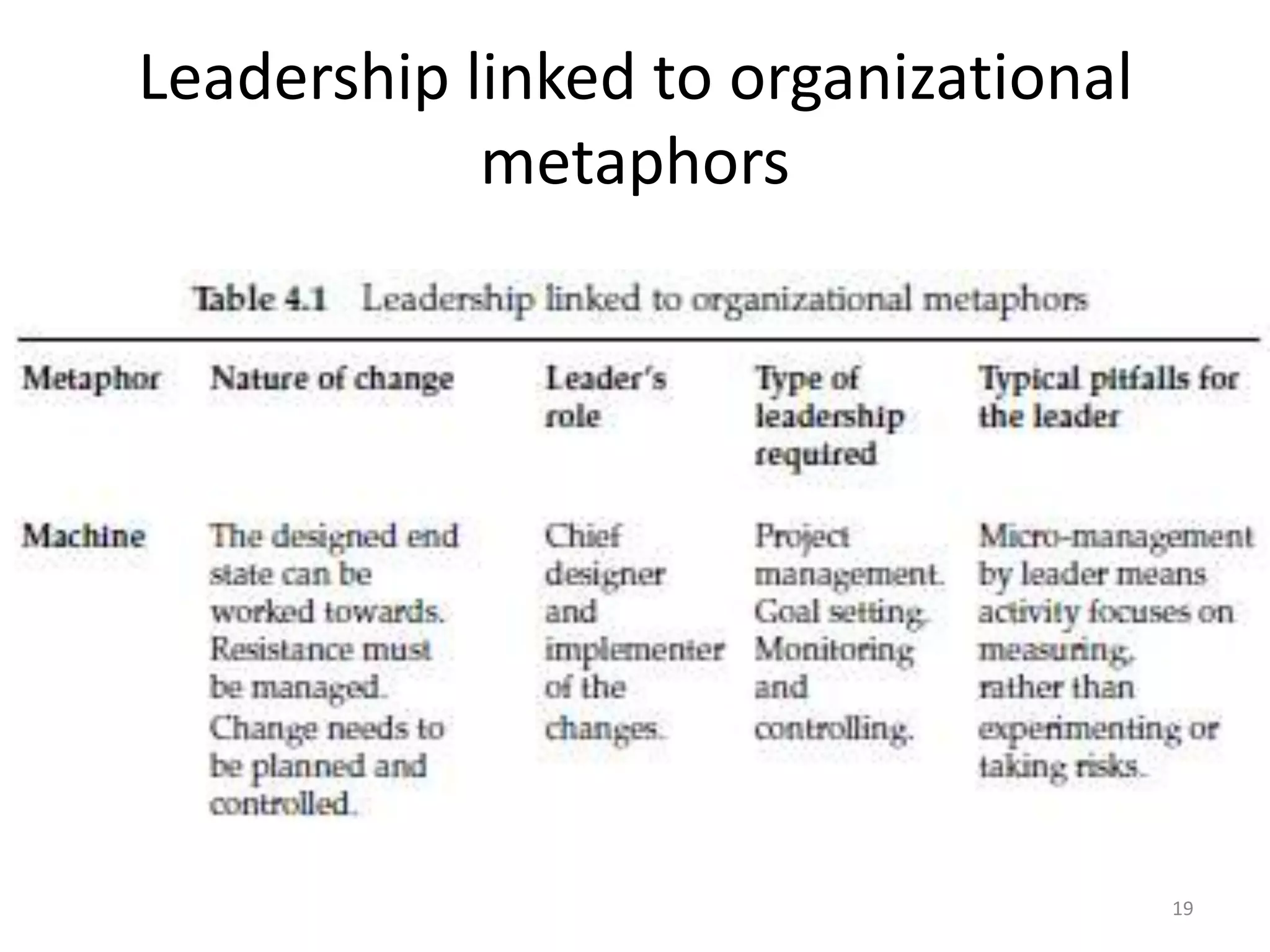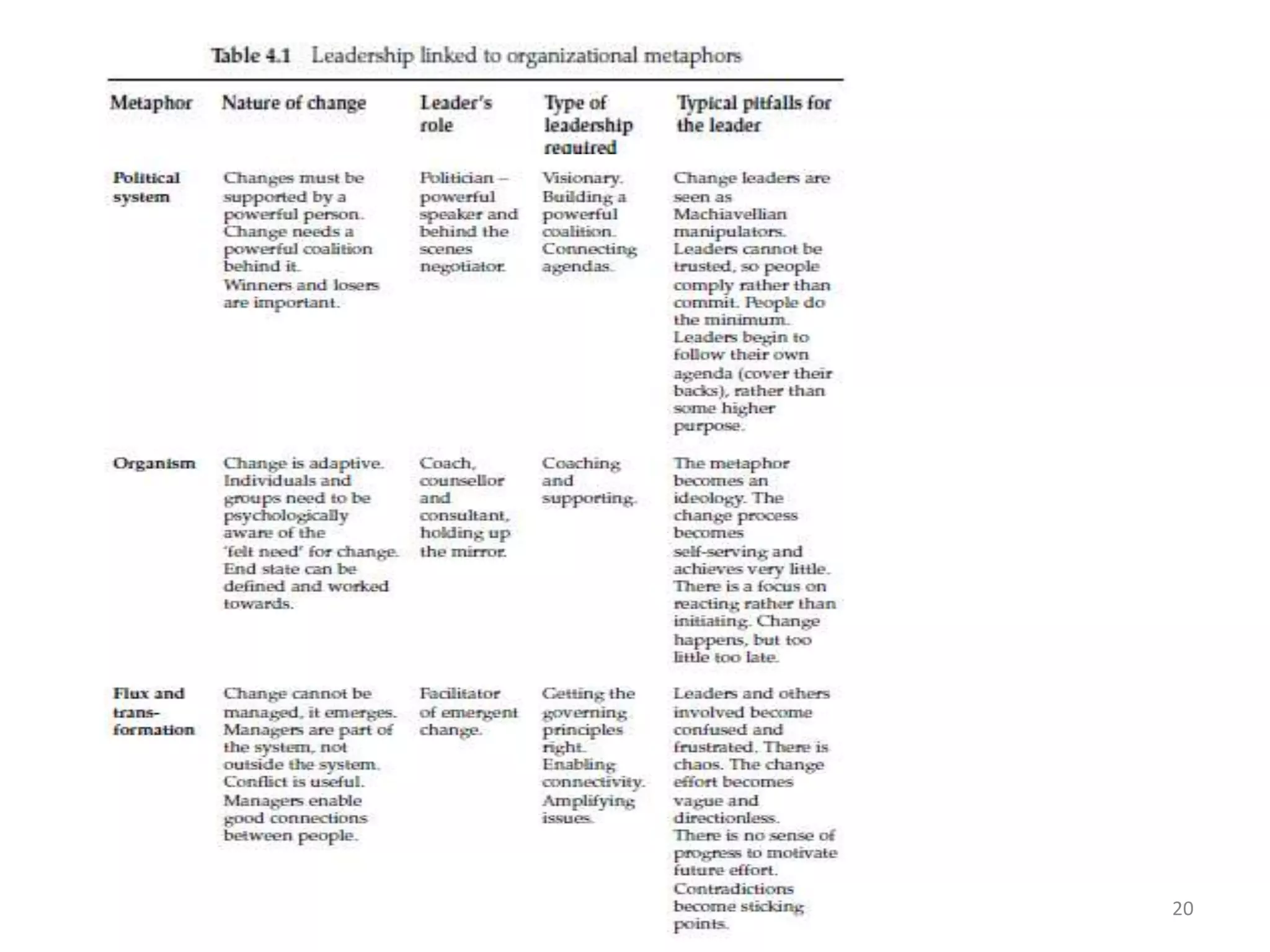The document outlines the activities and assignments for a course on strategic delivery of change. It includes:
- Two individual assignments focusing on changes in the student's organization and leadership.
- Two case studies on types of metaphors and the nature of change.
- Three class presentations on changes in Pakistan, force field analysis, and a failed change project.
- A final group project decided by each group regarding change management in their own organization.
- A final exam.
It provides updates on the due dates for assignments and presentations, including the final semester project presentations scheduled for January 5th and a tentative final exam date of January 12th.
